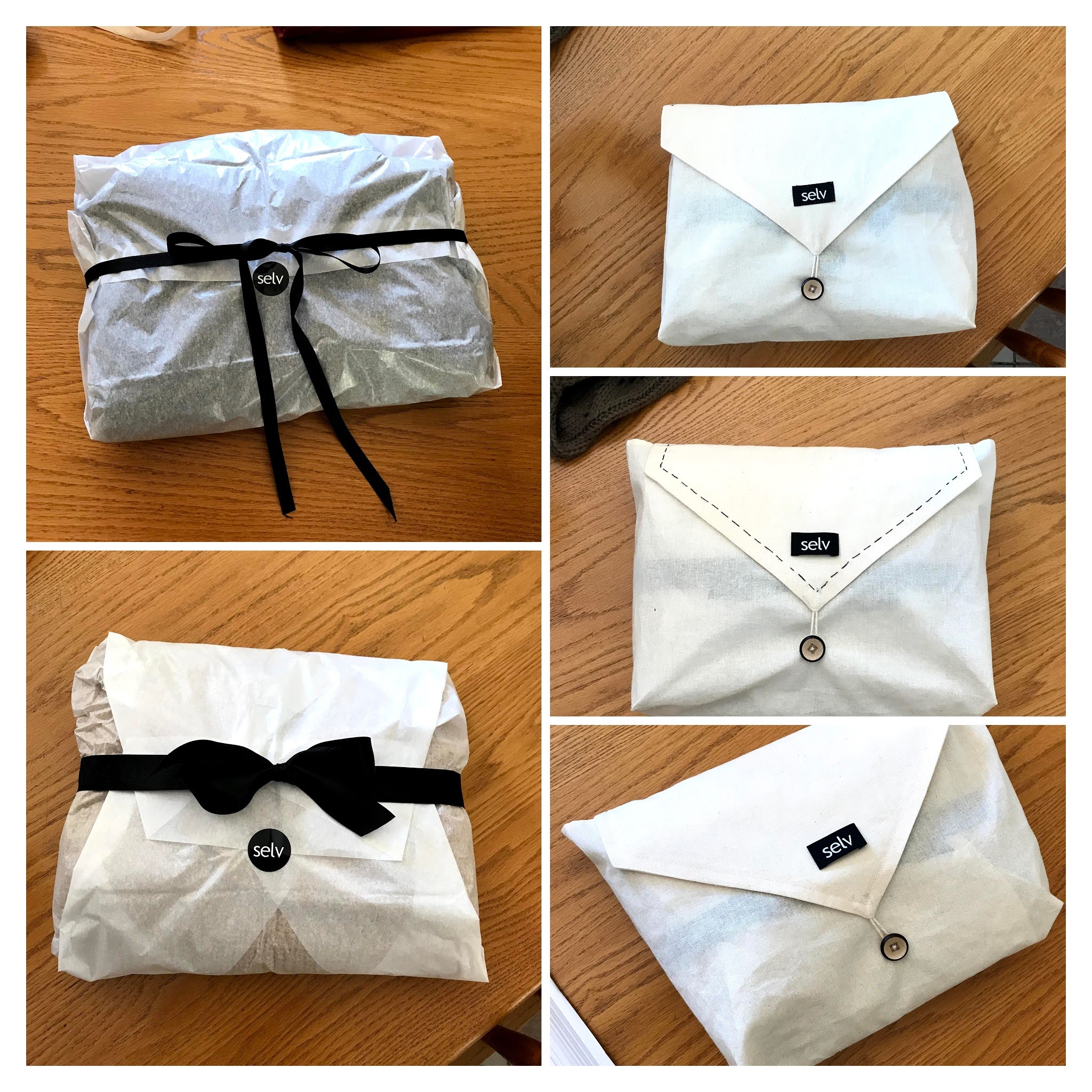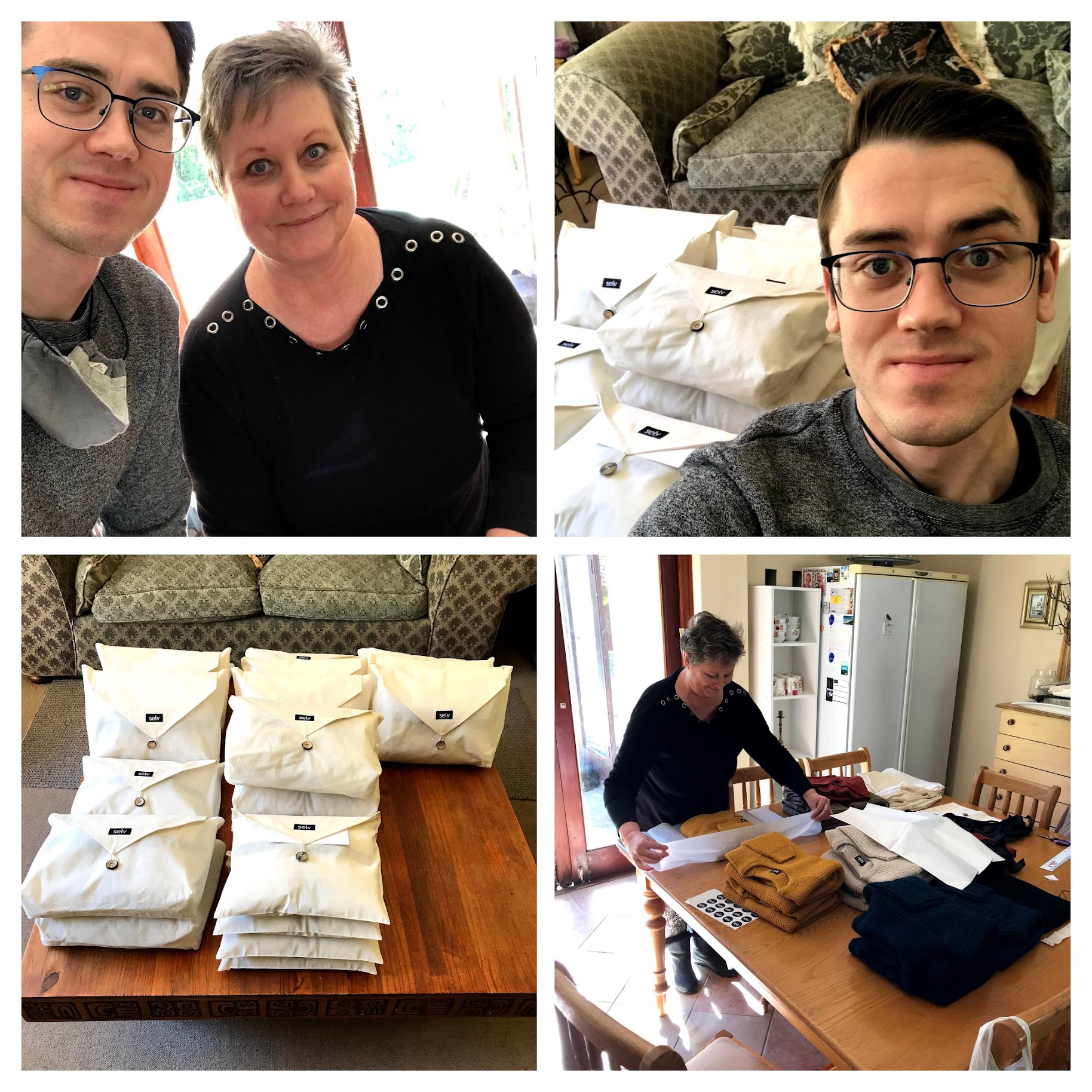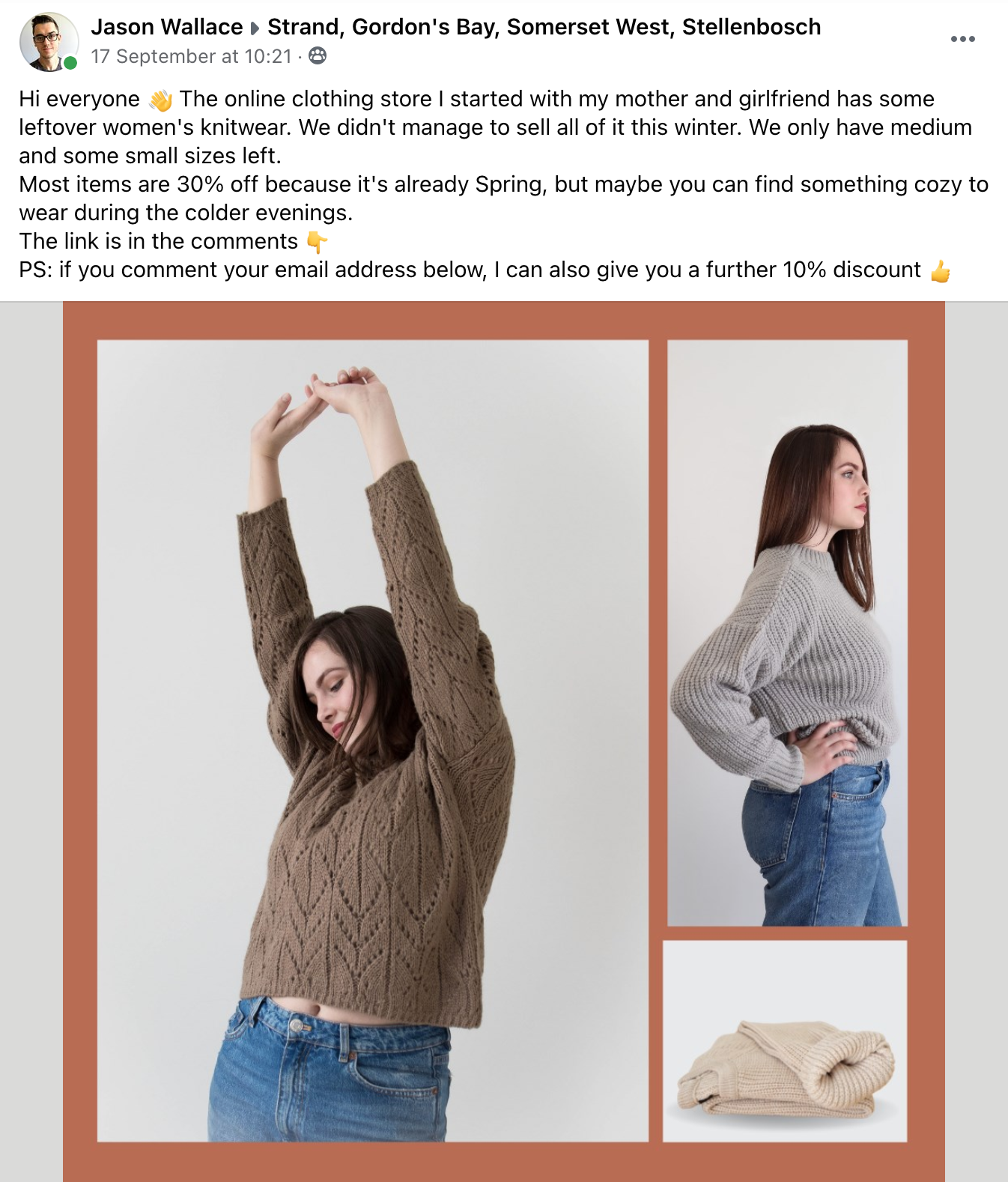September 2021 Retro
I launched my ecomm brand and got zero sales. Let's analyse the results!
Following on from last month's retro , I felt embarrassed about not launching my eComm store. Little did I know, that was the least of my worries. This past month was a tough pill to swallow (more about that below).
Main events
Launched eComm store
We did it! The website went live. The ads went live. Then... nothing!
🦗
— Jason Wallace (@jdeanwallace) September 7, 2021
ok, so let's dig into the details.
Initially, I didn't want to reveal the brand & website of the eComm store because I didn't want you (my now 16 loyal subscribers) to skew my results by buying all my stock.
👶 Hahaha what an incredibly naive thought to have. I'm glad to have recorded this moment.
Introducing Selv
The brand is called Selv and it literally means "self". It's a Danish word . We liked the name because it sounded cool, was short, and the local South African domain name was available: selv.co.za .
Selv is a South African women's clothing brand for timeless-fashion pieces that focus on comfort, simplicity, and the people who wear it.
We decided on only womens clothing because based on Sheena's online marketing experience, selling to men is way more difficult than selling to women. Women like to shop (more).
Our first clothing range was a collection of winter knitwear. Specifically, sweaters.
We decided on knitwear because firstly, I like knitwear. And secondly, knitwear seemed to be a staple winter clothing item. It ticked all the boxes for what our brand stands for: timeless, comfort, and simplicity.
Launching strategy
Our only acquisition channel was paid Facebook & Instagram ads.
Like I mentioned before, Sheena (my girlfriend) runs the ads for a handful of eComm clothing brands in South Africa. Her campaigns run profitably and was one of the motivations to build an eComm brand in the first place.
Seeing as Selv was a brand new brand, we needed to build up the social-proof on our social accounts to give Selv credibility.
Before our packaging was even completed, we ran ad campaigns to increase the Like & Follow count of the Selv Facebook & Instagram pages. At this point, the eComm store had no products and directed any curious visitors to sign-up to our pre-launch email list.
We didn't have a specific goal on how many Likes & Follows we wanted. The more, the better. We just set a daily ad budget and forgot about it.
Once the packaging was completed and the products were loaded onto the Shopify store, we fired off the ad campaigns aimed at website purchases.
Product packaging
In the first week of September, we finalized the packaging by prototyping a few variations.

Once we landed on a package design we all liked, we scheduled to produce it in "bulk" (we only have 19 items in stock 🤫).
Our launch date was the day the packaging was done. While Sheena was running the ads, my mother and I were packing the items.

The entire time that we were packing, I kept checking my phone for that first sale to come in 🥲.
Ad campaign results
It took me an obscene amount of time to go through the results and make sense of it all. I got stuck trying to find the best way to visualize the data in order to draw some kind of insights from it.
Facebook reporting is okay, but unreliable. When building reports (i.e. tables), sometimes the values would just not appear or it wouldn't sum/average the column.
I ended up exporting the data and working in Google Sheets instead. Sheets has its own quirks, but at least it was consistent.
We ran 3 campaigns:
-
Campaign A: Warm-up.
Get cheap(er) traffic in order to feed Facebook some data about our newly created audiences.
-
Campaign B: Test.
Test different ad copy & creatives on our audiences in order to convert visitors into customers. We evenly distributed the ad budget between our ad sets.
-
Campaign C: Optimize.
Take the best-performing ad sets from Campaign B and allow Facebook to allocate the ad budget in order to convert visitors into customers.

-
Observation: Campaign A has a steep drop-off between landing page views & product page views.
Insight: Facebook is optimizing for link clicks (because that was the objective) which results in a visitor that might be interested in the product, but not an active shopper.
-
Observation: Campaign B has a relatively low number of impressions.
Insight: This gives me low confidence in the accuracy of Campaign B's performance.

-
Observation: Campaign B has a high conversion rate relative to the amount spent.
Insights:
- Campaign B looks like the most cost-effective campaign, and
- We should have kept Campaign B running for a little longer in order to increase the confidence in the result.
-
Observation: A lot of money was spent on Campaign C with relatively low results.
Insight: We should have ended Campaign C earlier to avoid wasting money.
-
Observation: Across all campaigns, there's a steep drop-off between product page views and checkouts.
Insights: This could mean a couple of things. Either:
- The copy / images on the product page are terrible, or
- The clothing items aren't available in the correct sizes, or
- We launched too late and no one is willing to buy winter clothing in spring 🤦♂️
- All of the above.
Conclusion
To be honest, after launching and not getting that much anticipated first-sale, I kind of felt sorry for myself and didn't pay much attention to the results. It was immediately marked as a failure in my head.
After selling the dream of internet money to my non-techy mom, I just couldn't deliver.
As a result of my neglect, I didn't notice Campaign C burning money.
While the ads were running, they were doing okay. Without digging too deep into the ad performance, the click-through-rate was close to the industry standard of 1.24% . The website just wasn't converting.
Some last-ditch attempts at chasing that first-sale:
- We revised the copy of all the website pages.
- We added a 30% off end-of-season sale on most items.
-
We attempted some guerilla marketing tactics by posting in local South African Facebook groups with a more personal message:
 Me peddling my knitwears. Notice the "link is in the comments" to avoid upsetting the Facebook algorithm and the "comment your email address below" to help foster engagement. It's hard to look myself in the mirror after posting this 😞.
Me peddling my knitwears. Notice the "link is in the comments" to avoid upsetting the Facebook algorithm and the "comment your email address below" to help foster engagement. It's hard to look myself in the mirror after posting this 😞.
Two people commented with their email address 👍
Coming back to Observation 5, no matter how much we optimize the website, our products are still out of season. It's hard to trust any attempts at optimization when a customer's motivation to buy is gone.
During this time, I had an unintentional customer interview with an ideal customer. I was having breakfast with a friend, and his partner just happened to be a repeat buyer of the brands that we drew inspiration from. She gave me some great insights into why she buys from these other brands. Namely:
- The model looks happy & comfortable.
- The clothes are made of high quality fabric.
- Eye-catching lifestyle shots taken in a natural setting.
All things that seem lacking from Selv.
We decided to stop the ads and accept the loss.
Next steps
Ecomm still works though! I'm not giving up on it.
It feels like I made every mistake that I could possibly make, but at least now I can identify more of the things I don't know enough about. Such as:
- Branding
- Fashion modeling
- Quality fabrics
- Ad campaign monitoring
- Production management
We'll do everything again next year (starting January) and be ready for autumn (March-April).
Went on safari
In the last week of September, we flew up to Pretoria and enjoyed a couple of early morning game drives at Pilanesberg National Park . We saw 4 of the Big Five animals. The leopard was too elusive.

Time
Despite my 1 week off on safari, my total time allocation comes close to last month's total (~119 hours).
Last month's goals
-
Start running ads to my eComm store and make 1 sale.
Final grade: ☠️
Next month's goals
-
Figure out what to build next.
It'll probably be more software related, which I'm excited about.
-
Continue learning Go for an upcoming freelance project.
I learn better by doing, so I want to build a rudimentary Go web app of a for-fun idea I have.
Thanks for making it this far. If you're interested in what happens next, I'll email it to you next month 👇
